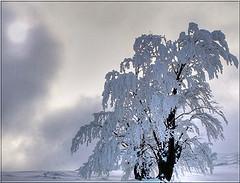 The estimated rate of additional costs in the winter season for residential buildings, projects that take into account external engineering networks, planning and intra- driveways, landscaping, planting, etc., are defined by the relevant rules of Table 4, section I (pp 11.1 – 11.3) with the factors that take into account the type of building: large-, body-block and wood – 2 brick-and-out block – 1,7. The estimated rates given in Section ii of the gos 81-05-02-2001, set as a percentage of the estimated cost of the construction work performed at a positive temperature environment. They take into account Additional factors and costs associated with the implementation of construction works in winter time: a) affecting the decline in productivity: – restriction of movement of workers warm clothes and inconvenience of work in mittens – reduced visibility in winter time in the workplace, the presence in the workplace of ice and snow, ice footwear, materials, structures and tools necessary to the process of periodically cleaned from the snow workspace, materials, etc. – the loss of work time associated with the disruption for heating work at ambient air temperatures from – 20 to – 35 C and by reducing working hours at a temperature below – 30 C – decrease in winter performance of construction machinery – the existence of wind speeds up to 10 m / s, inclusive; – complications in processing caused by low temperature (preparing temporary facilities for heating of the workers, temporary warming of water supply systems and tanks, the use of thermal insulation of concrete and mortar during transportation), and b) caused by the methods used in the production of construction works at negative external temperature: loosening of frozen ground; protection of soil from freezing, thawing soils, the application of early strength concrete and mortar, the introduction of concrete and mortars chemical addition, the application electrowarming concrete; heating products, all pipes and cables; device and dismantling of conventional heated shelters, fencing jobs by snow drifts, etc., and c) the additional costs caused by losses materials when performing work in the winter.
The estimated rate of additional costs in the winter season for residential buildings, projects that take into account external engineering networks, planning and intra- driveways, landscaping, planting, etc., are defined by the relevant rules of Table 4, section I (pp 11.1 – 11.3) with the factors that take into account the type of building: large-, body-block and wood – 2 brick-and-out block – 1,7. The estimated rates given in Section ii of the gos 81-05-02-2001, set as a percentage of the estimated cost of the construction work performed at a positive temperature environment. They take into account Additional factors and costs associated with the implementation of construction works in winter time: a) affecting the decline in productivity: – restriction of movement of workers warm clothes and inconvenience of work in mittens – reduced visibility in winter time in the workplace, the presence in the workplace of ice and snow, ice footwear, materials, structures and tools necessary to the process of periodically cleaned from the snow workspace, materials, etc. – the loss of work time associated with the disruption for heating work at ambient air temperatures from – 20 to – 35 C and by reducing working hours at a temperature below – 30 C – decrease in winter performance of construction machinery – the existence of wind speeds up to 10 m / s, inclusive; – complications in processing caused by low temperature (preparing temporary facilities for heating of the workers, temporary warming of water supply systems and tanks, the use of thermal insulation of concrete and mortar during transportation), and b) caused by the methods used in the production of construction works at negative external temperature: loosening of frozen ground; protection of soil from freezing, thawing soils, the application of early strength concrete and mortar, the introduction of concrete and mortars chemical addition, the application electrowarming concrete; heating products, all pipes and cables; device and dismantling of conventional heated shelters, fencing jobs by snow drifts, etc., and c) the additional costs caused by losses materials when performing work in the winter.
MTICS
There are always developments in computer functioning, and it isn’t easy to stay up to date
